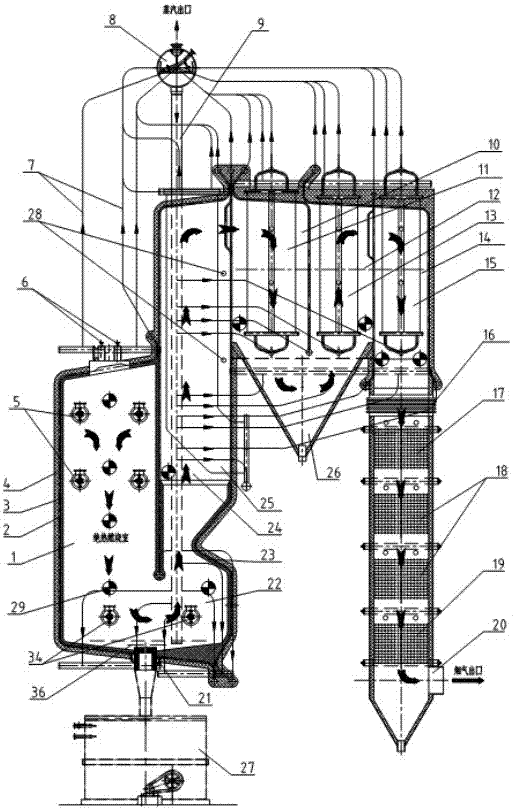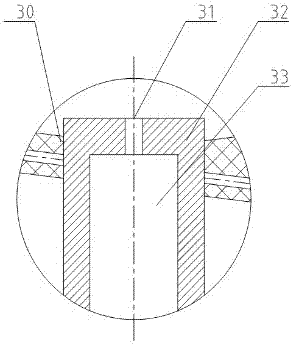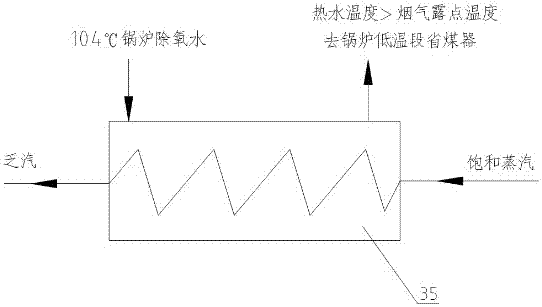A high-concentration saline organic waste liquid incineration boiler
A high-concentration salt-containing and organic waste liquid technology is applied in the field of high-concentration chemical salt-containing organic waste liquid incineration boilers and high-concentration salt-containing organic waste liquid incineration boilers. Problems such as blockage can be avoided, and the manufacturing process is simple, the processing cost is reduced, and the maintenance is convenient.
- Summary
- Abstract
- Description
- Claims
- Application Information
AI Technical Summary
Problems solved by technology
Method used
Image
Examples
Embodiment
[0022] Such as figure 1 A high-concentration chemical industry salt-containing organic waste liquid incineration boiler is shown, and the arrow direction indicates the direction of high-temperature flue gas from waste liquid incineration; its structure mainly includes: adiabatic combustion chamber (1), adiabatic combustion steering chamber ( 22), adiabatic combustion steering chamber smoke shielding wall (23), quenching chamber (24), quenching membrane wall tube panel (25), convection cooling chamber I (10), convection evaporation tube panel I (11), convection cooling chamber II (12), Convection Evaporation Panel II (13), Convection Cooling Chamber III (14), Convection Evaporation Panel III (15), Expansion Joint (16), High Temperature Section Economizer (17), Medium Temperature Section Economizer (18), low-temperature section economizer (19), boiler flue gas outlet (20), molten salt cooling tank (27), molten salt reheating burner (34), feed water preheater (35).
[0023] The ...
PUM
 Login to View More
Login to View More Abstract
Description
Claims
Application Information
 Login to View More
Login to View More - R&D
- Intellectual Property
- Life Sciences
- Materials
- Tech Scout
- Unparalleled Data Quality
- Higher Quality Content
- 60% Fewer Hallucinations
Browse by: Latest US Patents, China's latest patents, Technical Efficacy Thesaurus, Application Domain, Technology Topic, Popular Technical Reports.
© 2025 PatSnap. All rights reserved.Legal|Privacy policy|Modern Slavery Act Transparency Statement|Sitemap|About US| Contact US: help@patsnap.com



